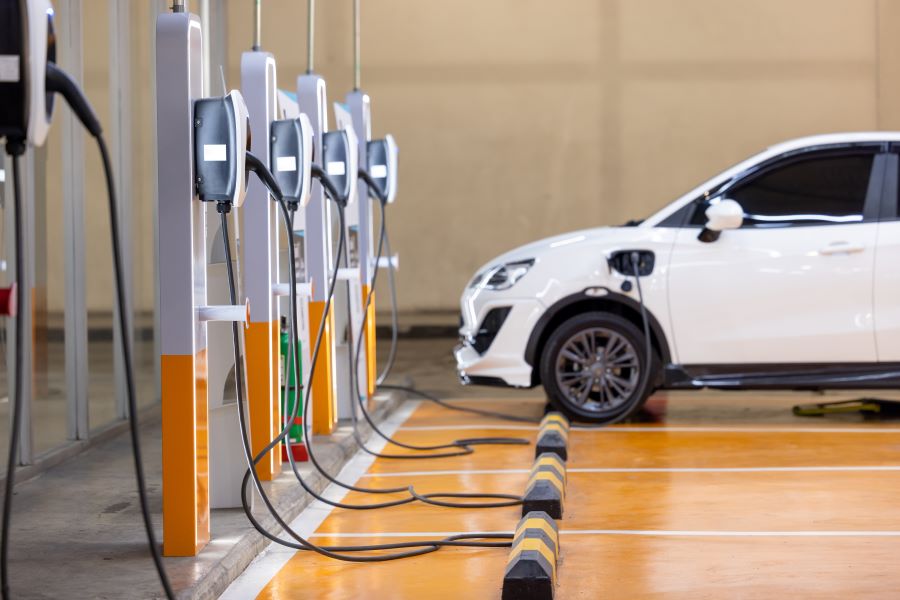Guide to Home Chargers for Electric Cars: Speed and Installation
The ownership of electric vehicles is rapidly increasing across UK – and with it, the importance of home charging solutions. Installing a suitable charging station at home eliminates range anxiety and ensures that your vehicle is ready to use every day. Since there are various charging speeds and installation options, it’s important to understand them in order to make an informed decision that fits your vehicle and lifestyle.

Guide to Home Chargers for Electric Cars: Speed and Installation
Home charging represents the most convenient and cost-effective way to power your electric vehicle. With the right setup, you can wake up each morning to a fully charged car, eliminating range anxiety and reducing dependence on public charging networks. The key lies in selecting appropriate equipment and ensuring proper installation that meets both your vehicle’s requirements and your home’s electrical capacity.
What makes a home charging station for electric cars ideal?
An ideal home charging station combines reliability, appropriate power output, and smart features that enhance user experience. Weather resistance rated to IP54 or higher ensures outdoor durability, while integrated safety features like earth leakage protection and overcurrent detection provide peace of mind. Smart connectivity allows remote monitoring, scheduling charging during off-peak hours, and integration with renewable energy systems. Cable management systems keep charging leads tidy, and user-friendly interfaces make daily operation effortless.
Load balancing capabilities prevent electrical system overload by automatically adjusting charging power based on household electricity demand. This feature becomes particularly valuable in homes with multiple electric vehicles or high electrical consumption. Quality construction using robust materials ensures longevity, while manufacturer warranties of five years or more indicate confidence in product reliability.
The fastest home wallboxes: What you should know
Home charging speed depends on multiple factors including wallbox power rating, vehicle onboard charger capacity, and electrical supply characteristics. The fastest residential charging typically occurs with three-phase 22kW units, though actual charging speeds vary significantly between vehicle models. Tesla Model 3 accepts up to 11kW AC charging, while BMW i4 can utilise the full 22kW capacity.
Charging time calculations help set realistic expectations. A 75kWh battery requiring 60kWh charge (20% to 100%) takes approximately 5.5 hours with an 11kW charger, assuming optimal conditions. However, charging curves mean actual times often exceed theoretical calculations, particularly as batteries approach full capacity. Temperature, battery age, and power supply stability all influence charging performance.
Modern wallboxes incorporate dynamic power management, automatically adjusting output based on grid conditions and household demand. This ensures consistent charging performance while preventing electrical system stress.
Home wallboxes: Differences between 11 kW and 22 kW
The fundamental difference between 11kW and 22kW wallboxes lies in electrical supply requirements and charging speed potential. 11kW units operate on single-phase or three-phase supply with 16A current, making them compatible with most residential electrical installations. 22kW chargers require three-phase supply with 32A capacity, necessitating electrical upgrades in many homes.
Practical charging speed differences depend entirely on vehicle compatibility. Most electric vehicles accept maximum 11kW AC charging, making 22kW wallboxes unnecessary for single-vehicle households. However, 22kW units provide future-proofing for vehicles with higher charging capabilities and enable faster charging when multiple vehicles share the same installation.
Cost implications extend beyond equipment purchase. 22kW installations often require electrical panel upgrades, new cabling, and potentially utility supply modifications. These additional expenses can double or triple total installation costs compared to 11kW systems.
Installation and power connection: What homeowners need to consider
Professional installation by qualified electricians ensures safety compliance and optimal performance. Initial electrical surveys assess existing supply capacity, earthing arrangements, and cable routing options. Many homes require electrical upgrades to accommodate wallbox installations, particularly older properties with limited electrical capacity.
Location selection balances convenience, cable reach, and electrical routing efficiency. Garages provide weather protection but may require longer cable runs from electrical panels. External installations need weatherproof enclosures and may face planning permission requirements in conservation areas. Ground-mounted pedestals offer flexibility but require foundation work and underground cable installation.
Building regulations compliance varies by region, with most installations requiring notification to local authorities. Electrical certificates confirm safe installation and enable warranty claims. Smart meter compatibility ensures accurate energy monitoring and enables time-of-use tariff optimisation.
Costs and provider comparison
Home wallbox costs vary significantly based on power rating, features, and installation complexity. Basic 7kW units start around £300-500, while premium 22kW chargers with advanced features cost £800-1,500. Installation expenses typically range from £500-2,000, depending on electrical work requirements and cable routing complexity.
| Provider | Product | Power Rating | Key Features | Cost Estimation |
|---|---|---|---|---|
| Zappi | Zappi v2.1 | 7kW | Solar integration, load balancing | £700-900 + installation |
| Pod Point | Solo 3S | 7kW | Smart connectivity, scheduling | £500-700 + installation |
| Rolec | WallPod HomeSmart | 7kW/22kW | RFID access, energy monitoring | £600-1,200 + installation |
| Andersen | A2 | 7kW/22kW | Premium design, customisation | £1,000-1,800 + installation |
| Ohme | Home Pro | 7kW | Smart tariff integration | £500-650 + installation |
Government grants previously reduced installation costs through schemes like the Electric Vehicle Homecharge Scheme, though availability varies by region and eligibility criteria. Some energy suppliers offer installation packages with preferential electricity tariffs, creating long-term savings opportunities.
Prices, rates, or cost estimates mentioned in this article are based on the latest available information but may change over time. Independent research is advised before making financial decisions.
Conclusion
Selecting the right home charging solution requires careful consideration of vehicle requirements, electrical capacity, and budget constraints. While 11kW wallboxes suit most residential applications, 22kW units provide future-proofing for households anticipating multiple electric vehicles. Professional installation ensures safety and optimal performance, while smart features enhance convenience and enable cost savings through intelligent charging scheduling. The investment in home charging infrastructure pays dividends through reduced charging costs, enhanced convenience, and increased property value.




